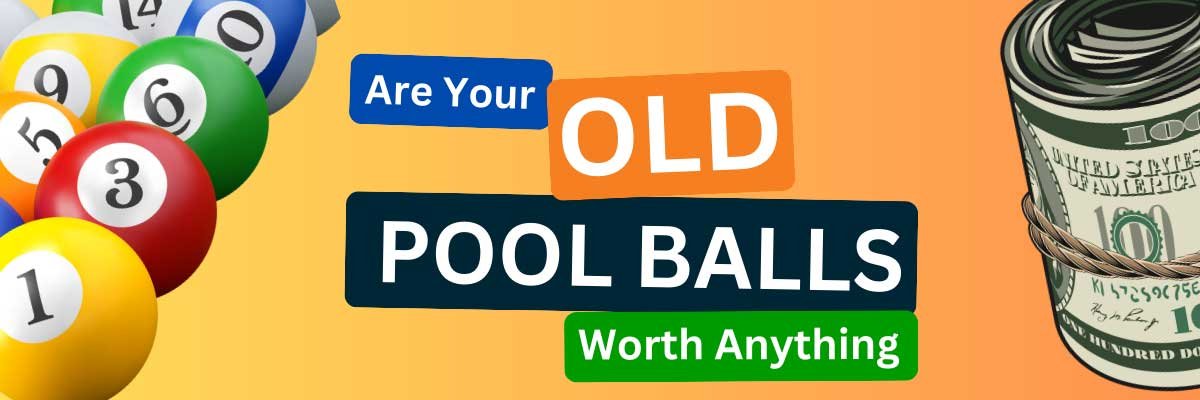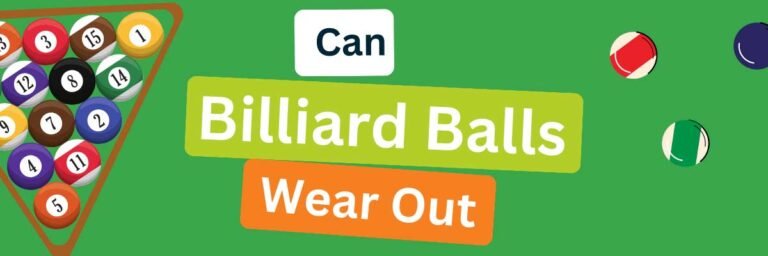Are Your Old Pool Balls Worth Anything?

Billiards, a game steeped in history and skill, has been a popular pastime for centuries.
Central to this game are the pool balls, which have evolved significantly over time.
This brings us to an intriguing question: Are your old pool balls worth anything?
This article delves into the world of pool balls, exploring their history, types, and factors that determine their value.
Key Takeaways
- Historical Significance: Older pool balls, especially those made from ivory or early forms of plastics, can be highly valuable.
- Condition and Completeness: The value significantly depends on the condition of the balls and if the set is complete.
- Brand and Rarity: Certain brands and rare editions can fetch higher prices.
Are Your Old Pool Balls Worth Anything?
Unfortunately, the large majority of modern pool balls produced in the last 30–40 years are not going to be worth very much, unless they are vintage.
Pool balls today are pretty much made in large quantities out of phenolic resin, and modern resin balls are generally worthless, to buyers when they are worn out.
- You may be lucky to hold a limited edition set of balls, in which case then that could be worth further looking into
- Bakelite pool balls and Ivory aka vintage pool balls can hold immense value and may be worth a lot to collectors
Even if they are worthless, it’s not a bad idea to keep your old set as back up should you need them. Most players have at least two sets of balls.
There are also some amazing ways you can reuse your old pool balls around your home and backyard, with minimal effort needed.
Vintage Pool Balls
Vintage pool balls is where the money is at, if you are lucky enough to own a set, especially ones made from Ivory.
Ivory vintage balls, ones that are in good condition, and well maintained pools balls, cleaned regularly, are highly sought after by investors.
There are lots of sets of these in existence, so they need to be in good condition, which is rare.
That’s why they are willing to spend good money as they less frequently become available.
The problem is that you may have a small problem trying to sell pool balls made of Ivory.
Can You Sell Ivory Pool Balls?
Yes, you can sell ivory balls, however it can be problematic and against many local state laws.
There are strict regulations when it comes to selling Ivory products, and for the large part is illegal, unless satisfy many conditions, such as:
- They are at least 100 years old, and you have the documentation to prove it
- They are made with less than 200 grams of ivory
- They went through one of the 13 ESA antique ports
There are also more conditions to the selling of Ivory under the Wildlife Tracking law.
How Much Are Ivory Pool Balls Worth?
Ivory ball pools can be worth anything from $50 to thousands of dollars.
Some of the most important things to consider when determining how much they are worth include;
- The condition the ivory pool balls are in
- If they are in the original packaging
- The time period of their production
- Where they were made
To put into context, there have been some vintage sets of ivory pool balls in immaculate condition, with the original box, that have sold for between $40,000 – $100,000.
However, I can’t guarantee it that yours will be worth anywhere near the high end of the market. Very few will fetch that amount of dollar signs.
How to Identify Vintage Pool Balls?
There are a few different ways to identify vintage pool balls depending on the type of ball, whether it is ivory or bakelite.
How to Identify Ivory Pool Balls?
To identify Ivory pool balls, you can use the:
- The blacklight test
- Identify the schreger lines
The Blacklight Test
The black light test is a good way to identify whether a pool ball is made of plastic resins, which saves a lot of time and effort
If it is, then the color of the ball will change to a fluorescent blue/blue-white, when the ball is placed under a long wave black light.
Ivory shows as white, but it can also show as a dulled yellow brown.
However, so too does old celluloid balls, ivory dust and bone, so is the black light test in isolation can’t be used to identify Ivory, but helps clarify if it is plastic or not.
Identify the Schreger lines
The presence of Schreger lines always indicates real Ivory.
- The Schreger lines are the unique cross-hatched patterns that are formed naturally in elephant ivory
- The angles the lines cross each other at are called Schreger angles
- These have never been copied or duplicated with plastics or any other material
The lines can be hard to identify, depending on how the ivory was cut, so you will definitely need a magnifying glass. It’s not always a guarantee that the balls will even show them.
Not all Ivory cuts will display them, so if they don’t have the lines, it doesn’t necessarily mean your set is made from another material. They may still be Ivory and will need to be looked at by a professional antique dealer.
How to Identify Bakelite Pool Balls?
To identify Bakelite balls, you can:
- Tap The balls Together
- Do the sniff test
- Use Formula 409
- Try the Simichrome test
Tap the Balls Together
When two pieces of bake lite are tapped together, they make a distinct sound. It’s hard to accurately describe the ‘clunk’ but you will hear the difference between that and two plastic balls tapped together.
It’s not enough to identify made of bakelite, but can help separate them from plastic.
The Sniff Test
When genuine bakelite is heated, the material produces a smell like formaldehyde.
There are two ways you can do the sniff test:
- Rub the balls – Vigorously rub the balls to generate heat. If it is made out of bakelite, you should be able to smell the formaldehyde odor
- Using heated water – This works similar to above, except you place the balls in a plastic heat-resistant container and run the container under hot water. This will heat the balls, which will produce the same odor if they are genuine bakelite.
The heating and sniffing test takes a little practice to get better at identifying the correct chemical smell.
The Simichrome Test
Along with the water test, the Simichrome test is one of the most popular method’s bakelite identification.
To do this, you will need Simichrome polish.
- Apply a very small amount of the cream onto a cloth
- Rub the ball with the cloth
- The cloth turning yellow means that the balls are bakelite
Using Formula 409
Formula 409 cleaner can also be used to test for bakelite, however it can sometimes give false readings depending on the ball’s coating.
- Dampen a cotton swap with the solution and rubbing it over the billiard balls.
- The swab will change color to yellow if the balls are bakelite
- Combine this with the above tests to authenticate the balls fully
Where Can You Sell Old Pool Balls?
Generally speaking, collectors are usually the only ones interested in purchasing old pool balls.
If you believe your old pool balls have some value, popular billiard forums are one of the best places to scour. It’s also a good idea to go to a reputable antique dealer, or a few different ones, to get your old pool balls looked over by a professional.
Billiard and pool forums are particular hangouts for collectors looking to cut a deal on valuable old pool ball sets.
References
https://www.thesprucecrafts.com/ways-to-identify-bakelite-148495
https://www.realorrepro.com/article/Ivory-genuine-fake–confusing





